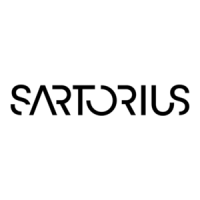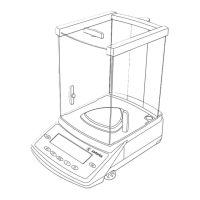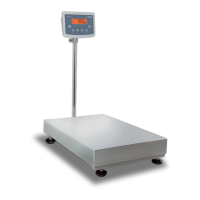Tare Memory, Calculated Values:
The symbols displayed here indicate
when there is a value in one of the tare
memories or when the value shown is a
result of calculation rather than direct
measurement.
These symbols are as follows:
a Calculated value
s1 Net value | tare memory
s2 used by an application program
(e.g., formulation, second tare
memory)
Application Pictograms:
The pictograms displayed here indicate
the application(s) selected. The pic-
togram is displayed inversely (white on
a black background) when the corre-
sponding application is active.
For example, the following symbols may
be displayed simultaneously:
A The counting application is active
H Checkweighing is also active
S Print
T Data record
Text Line:
Additional information is displayed here
(e.g., operator guidance prompts, name
of the active program, etc.)
Soft Key Labels:
The current functions of the soft keys
above the function keys (arrow keys)
are indicated here; during calibration |
adjustment, this line shows up- and
down-arrows (
Q and q) for selecting
calibration and adjustment functions.
5
Display for Menu Parameter Settings
(Setup)
This display is divided into three sections.
Status Line:
The status line of shows the function
of the display screen page. In the Setup
menu, the current menu “path” is
shown here.
Setup Menu Example: “Balance/scale
functions”:
Input and Output Window
This window contains either detailed
information (e.g., on the active
application) or a pick list. A selected
item is displayed inversely (white
characters on a black background).
You can also enter information in an
active field in this window using the
alphabetic and numeric keys.
Setup Menu Example,
“Device parameters, Adapt filter”:
The following symbol may be displayed
in the input and output window:
d this symbol marks the saved
menu setting
Soft Key Labels
See the description “Function Keys
(Soft Keys)” on the previous page
To set a parameter:
G Press the
Q or q soft key repeatedly
until the desired setting is selected
(displayed inversely)
G Confirm your selection:
press the
l soft key
To change the numeric value of
a parameter:
G Press the
Q or q soft key repeatedly,
if necessary, until the desired setting is
selected (displayed inversely)
G Enter a new value or character:
use the 0 1 … 9 . keys
or the a key and enter the desired
letters
G Confirm your selection:
press the l soft key
To exit Setup: press the oo soft key
Input
Bar Code Scanner or Keyboard Input
You can use a bar code scanner or an
external keyboard to input alphanumer-
ic values. These inputs are processed in
the same manner as keypad inputs on
the display and control unit of the bal-
ance. Bar code and keyboard inputs are
only displayed; they cannot activate any
function.
To assign a bar code scanner or
keyboard input to a function, press one
of the following soft keys:
– Lot
– Samples
– Measured values
– Sample number
– Tare value
– Initial weight
– Backweighed value
– Sample ID
Foot or Hand Switch Input
You can connect a foot switch or a
hand switch to the balance to have this
device perform a keypad function (such
as c or w).
PC Input
You can use a computer to control
the functions of the weighing cell and
display and control unit via the commu-
nications port (see the “Data Output
Function” section in the chapter
entitled “Operation”).
